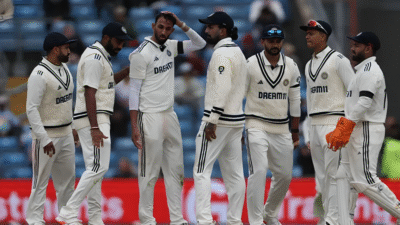Cricket is more than just a game in Asia — it’s an emotion shared by millions. The Asia Cup is the only tournament that regularly brings the continent’s top teams together, making it one of cricket’s most exciting events. Let’s take a look at how this competition began and how it has grown over the years.
How It All Started
The idea of the Asia Cup was born in 1983 when the Asian Cricket Council (ACC) was formed to promote cricket among Asian countries. The first Asia Cup was played in 1984 in Sharjah, UAE.
Only three teams took part: India, Pakistan, and Sri Lanka. India won that inaugural edition, starting a tradition that still continues.
Growth in the Early Years
- In 1986, Bangladesh joined the tournament for the first time.
- Political tensions sometimes affected participation — for example, India did not play in 1986, and Pakistan skipped a few editions later.
- The 1993 Asia Cup was cancelled because of strained relations between India and Pakistan.
Despite these issues, the competition kept attracting fans because it offered rare chances to see arch-rivals face off in neutral venues.
Memorable Moments and Changes
As time passed, the Asia Cup produced unforgettable matches:
- 2008 Final – Sri Lanka beat India, helped by Sanath Jayasuriya’s attacking batting and Ajantha Mendis’ magical spin.
- 2010 Final – India lifted the trophy after 15 years, defeating Sri Lanka in a dominant display.
- Afghanistan’s entry in 2014 brought fresh energy and gave smaller nations a platform.
The format also evolved. Traditionally an ODI (50-over) event, it switched to T20 in 2016 to fit the global cricket calendar. Since then, the ACC alternates formats: ODI when a World Cup is near, T20 before a T20 World Cup.
Modern Era
Recent editions have shown how the tournament adapts:
- The 2023 Asia Cup was held in both Pakistan and Sri Lanka using a “hybrid” hosting model.
- India remains the most successful team with 8 titles, followed by Sri Lanka with 6, and Pakistan with 2.
- Players like Sanath Jayasuriya (most runs) and Lasith Malinga (most wickets) have left their mark on the tournament’s record books.
Challenges Along the Way
- Politics often made hosting complicated, especially when India and Pakistan were involved.
- Busy schedules with World Cups, leagues, and bilateral series forced date changes and even cancellations.
- Switching between ODI and T20 sometimes made it hard for fans to compare records across eras.
Yet, the Asia Cup survived every hurdle because of its unique appeal.
Why the Asia Cup Matters
The tournament isn’t just about winning trophies. It:
- Brings together countries that rarely play each other in long series.
- Gives emerging teams, like Afghanistan, a chance to test themselves against stronger sides.
- Fuels legendary rivalries — especially India vs Pakistan — which draw worldwide attention.
The Road Ahead
The Asia Cup continues to grow. Future editions may include more associate nations and innovative hosting formats. Whatever changes come, its spirit of uniting Asian cricket will stay alive.
Conclusion
From a three-team contest in 1984 to a multi-nation festival today, the Asia Cup has become an important part of world cricket. It celebrates the region’s talent, passion, and love for the game — proving that cricket in Asia is a story of competition, pride, and friendship.





